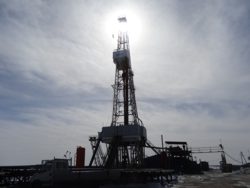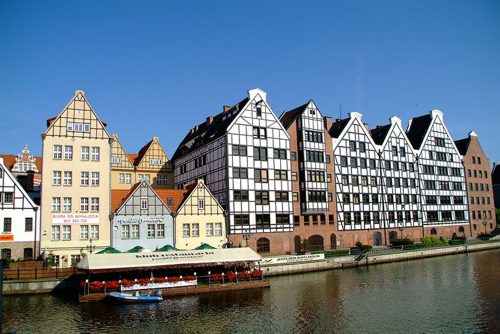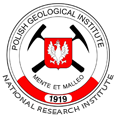CANCELED We are very sorry for your inconvenience.

27-28.09.2014
Leaders: Grzegorz Uścinowicz, (PGI-NRI) & Ireneusz Dyrka, (PGI-NRI)
Participants: Minimum 15, Maximum 25
Cost: 260 EURO (1040 PLN)
Includes: field trip guidebook, transportation, full board & accommodation (single rooms)
Start: 27.09.2014 | Saturday > Warsaw (Polish Geological Institute – NRI, 4 Rakowiecka St.)
Finish: 28.09. 2014 | Sunday > Warsaw (Polish Geological Institute – NRI, 4 Rakowiecka St.)
Transport: bus
Field trip route: Warsaw – Gdańsk – Kosakowo – PGNiG shale gas drill site – Żarnowiec – Dębki –Jastrzębia Góra – Mechowskie Groty – Warsaw –– 1,000 km
 The field trip of two days is primarily focusing on unconventional (including shale) oil and gas exploration in Pomerania – Poland’s most prospective region.
The field trip of two days is primarily focusing on unconventional (including shale) oil and gas exploration in Pomerania – Poland’s most prospective region.
Other interesting sites to be seen include two unique geosites: an active marine cliff at Jastrzębia Góra and the Mechowo Suffosive Cave formed in glaciofluvial
sediments (the only one of this kind in the European Lowlands).
During the trip, the following sites are planned:
A Drill Site of PGNiG (Polish Oil and Gas Company) – Poland’s gas market leader. The site of a shale gas exploration/appraisal well will be visited
during the trip. PGNiG experts will be there to present the geology of that exploration area. Drilling technology and environment monitoring methods
applied in subsequent stages of work will be discussed, too.
- Kosakowo Underground Natural Gas Storage Facility – a cavern storage facility commissioned in January 2014, where natural gas supplied from the transmission system is injected to the underground caverns located at a depth of approx. 1300 m. Ultimately, its working capacity is to reach approx. 600 million cubic meters of gas. For obvious reasons, only on-the-surface facilities will be visited.
- Żarnowiec Crude Oil and Natural Gas Production Facility – where tight oil trapped in Middle Cambrian sandstones and mudstones has been produced since the 1970’s.
- Dębki Crude Oil Production Facility – an active oil well that has been operated for over 40 years in an attractive and popular tourist resort. The oil well is located some 300 meters away from the seashore. Tight oil is produced from Middle Cambrian formations.
- Jastrzębia Góra Cliff - Geodynamics of the cliffed Baltic coast and methods of coast protection will be presented. Due to a complex geology and hydrogeology, the cliff is prone to intense landsliding. The cliff is monitored by PGI-NRI using a ground-based laser scanning method which provides an image of the coast erosion rate and patterns. Jastrzębia Góra is an attractive seaside resort with the northernmost point of the Polish coast. Impressive sunsets over the Baltic can be admired there.
- Mechowo Cave – this suffosive cave formed in glaciofluvial deposits of the Baltic Glaciation is a unique geological feature in the lowlands. It occurred as a result of sand washing away from between calcite-cemented sedimentary rocks. The cave is approx. 65 m long and up to 2 m high. The cemented sediments appear as intricate pillars that form the entrance and support the cave’s ceiling.
When traveling in a coach we will admire the beauty of the morainic landscape with its various landforms left by the continental glacier. The landscape of the Kaszuby Region is interspersed with lakes, pine and beech forests in the setting of undulated expanses of post-glacial morainic hills. The post-glacial high plain was formed in the latest stages of the Vistulian Glaciation (the Pomeranian and Gardno Stages). Gdańsk, the capital of the Pomeranian Province, which is counted among the most beautiful cities in Poland, also will be visited during the trip. While sightseeing the Main Town we will visit the most prominent historic buildings: the Basilica of the Assumption of the Blessed Virgin Mary, the Golden Gate or the Main Town Hall, the historic Royal Route with its Long Market Square and the peculiar harbour crane built in 1444. You will be accommodated in Sopot, a leading Polish resort, which is notable, among other things, for Poland’s longest (over 500 m long) pier.

















